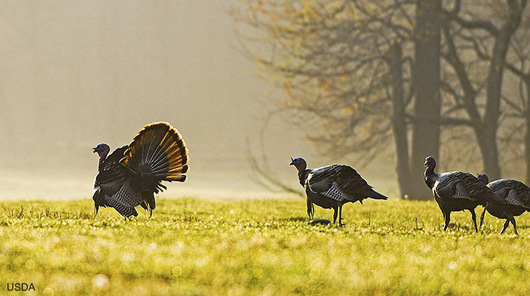Are you in search of the best time to hunt spring gobblers? There are possibilities that with the changing era of technology, you will surely get to find apps related to suggesting the best conditions for hunting. But a bit of real understanding is also required to excel at spring turkey hunting. It is not a complicated task to do. You need to sit where you are and think about various vital factors that can impact the responses from a lonely tom.
If you are reading this article, then you need to read it carefully until the end to find all the answers to the best days to be in the field. In fact, the time of less pressure is the best time to hunt spring turkeys, in addition to the best weather for turkey hunting as a significant portion of the decision.
No sound in the spring woods can jar a sleep-deprived hunter to rapt attention like wild turkey’s gobble. When a gobble rolls through the spring woods, it turns an uneventful hunt into an instant adventure. But the tom turkey that unleashed that booming oath doesn’t know, or care, about its impact on humans. The gobble’s purpose is to announce his presence to all hens within earshot and hopefully summon their company.
Still, veteran hunters know that even during the turkey’s spring mating season, there is no guarantee you’ll hear a gobble on any given hunt. Conversely, many deer hunters have heard turkeys gobbling in December. Gobbling behavior is influenced by a wide range of factors, but gobblers can behave differently on successive days under similar conditions. Precipitation, temperature, humidity, time of year, time of day, other turkeys calling and even random sounds such as a coyote howl or a car door slamming can all impact gobbling frequency.
No matter how good you are at hunting Spring turkeys, there is always a factor such as weather which places a great emphasis on your turkey hunt. Typically, you will come across mainly four weather conditions, i.e., rain, wind, warmth, and snow. Have you remembered that sometimes bad weather can also be your good friend? So, here it applies as wind, rain, and snow are considered as bad weather by few of the hunters. If you use some tactics, then you will be surely able to find best timings in these weathers too. Gobblers are most active at daylight and late afternoon when temperatures are ideal for hunting. During hot, sunny weather gobblers often take a nap and lay down in the shade of a tree or in tall grass to cool their body. A sudden thunderstorm can bring gobblers on the run as they quickly become active. May gobblers often feed in plowed fields following heavy showers in search of earthworms.
Warm weather turkey hunts can be run-n-gun adventures where you do plenty of scouting and then the hunt begins. Keep in mind that ambushing a wild turkey is a difficult task, but it is a strategy to add to your hunting arsenal. There are several tactics we use to fill our tag. Fact is, the more time you spend outdoors hunting, the more encounters you



















![The Best Deer Camp Chili [VIDEO] Deer Chili Ingredients, Tomatoes, Chili Spices](/wp-content/uploads/2015/10/Deer-Chili-Deer-Camp-Recipe-218x150.jpg)
![How to Call Elk Early in the Season [VIDEO]](/wp-content/uploads/2016/08/byers003-218x150.jpg)




![Idiots Disturb Hunter: How Would You Have Handled It? [VIDEO]](/wp-content/uploads/2015/10/DSC00110-e1474487693878-100x70.jpg)
![Albino Buck Shocked to Shed His Antlers [VIDEO]](/wp-content/uploads/2015/10/AlbinoDeer-100x70.jpg)